Tom's Hardware Verdict
Corsair’s 7000D lays out the red carpet for your hardware, offering an excellent foundation for building a big, mean, business machine. Just keep space in mind, as this case truly is big.
Pros
- +
Excellent design & production quality
- +
No RGB. Just a clean, professional appearance
- +
Dark glass tint hides hardware mismatching
- +
Lavish top IO
Cons
- -
Big & heavy
- -
Pricy
- -
Overkill for most builds
Why you can trust Tom's Hardware
Back in September of 2020, Corsair introduced its 4000X and 4000D cases, offering up two pretty case designs that in a way, set the benchmark for simplistic, modern, but classic ATX tower design. Then, in January the company dropped the 5000X and 5000D (full review of the 5000X here), growing the case in dimensions – but I wasn’t the biggest fan of the 5000X that I reviewed due to basically forcing you to use the side intake to get decent thermals, while offering little more added space than the 4000X.
So, when Corsair reached out asking if I wanted to review its new 7000X or 7000D chassis, and I got a peek at its designs, I decided to have a look at the 7000D, this time passing on the front RGB goodness in favor of a mesh intake. Let’s see if I like this one more, and whether it’s good enough for our Best PC Cases list. Pricing is set at $260, so this better be good.
Specifications
| Type | Full-Tower ATX |
| Motherboard Support | Mini-ITX, Micro-ATX, ATX, E-ATX |
| Dimensions (HxWxD) | 23.6 x 9.7 x 21.7 inches (600 x 248 x 550 mm) |
| Max GPU Length | 17.7 inches (450 mm) |
| CPU Cooler Height | 7.5 inches (190 mm) |
| Max PSU Length | 8.9 inches (225 mm) |
| External Bays | ✗ |
| Internal Bays | 6x 3.5-inch |
| 4x 2.5-inch | |
| Expansion Slots | 8x + 3x |
| Front I/O | 4x USB 3.0, Optional USB-C, 3.5 mm Audio/Mic Combo |
| Other | Tempered Glass Panel, PWM Fan Hub |
| Front Fans | 2x 140 mm (Up to 3x 140mm, 4x 120mm) |
| Rear Fans | 1x 140mm (Up to 1x 140mm) |
| Top Fans | None (Up to 4x 120mm, 3x 140mm) |
| Bottom Fans | None |
| Side Fans | None (up to 4x 120mm) |
| RGB | No |
| Damping | No |
| Warranty | 2 Years |
Feature

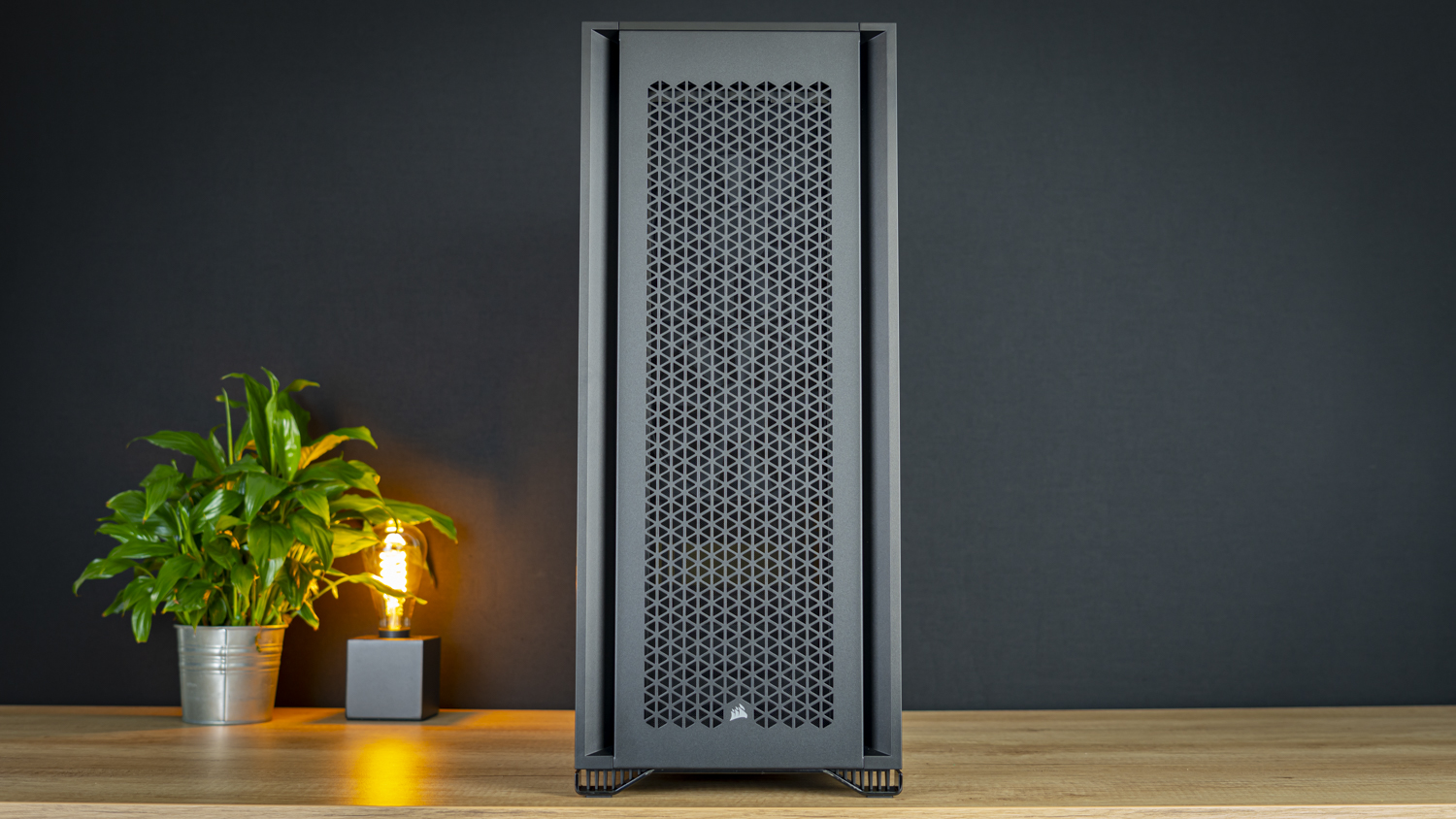
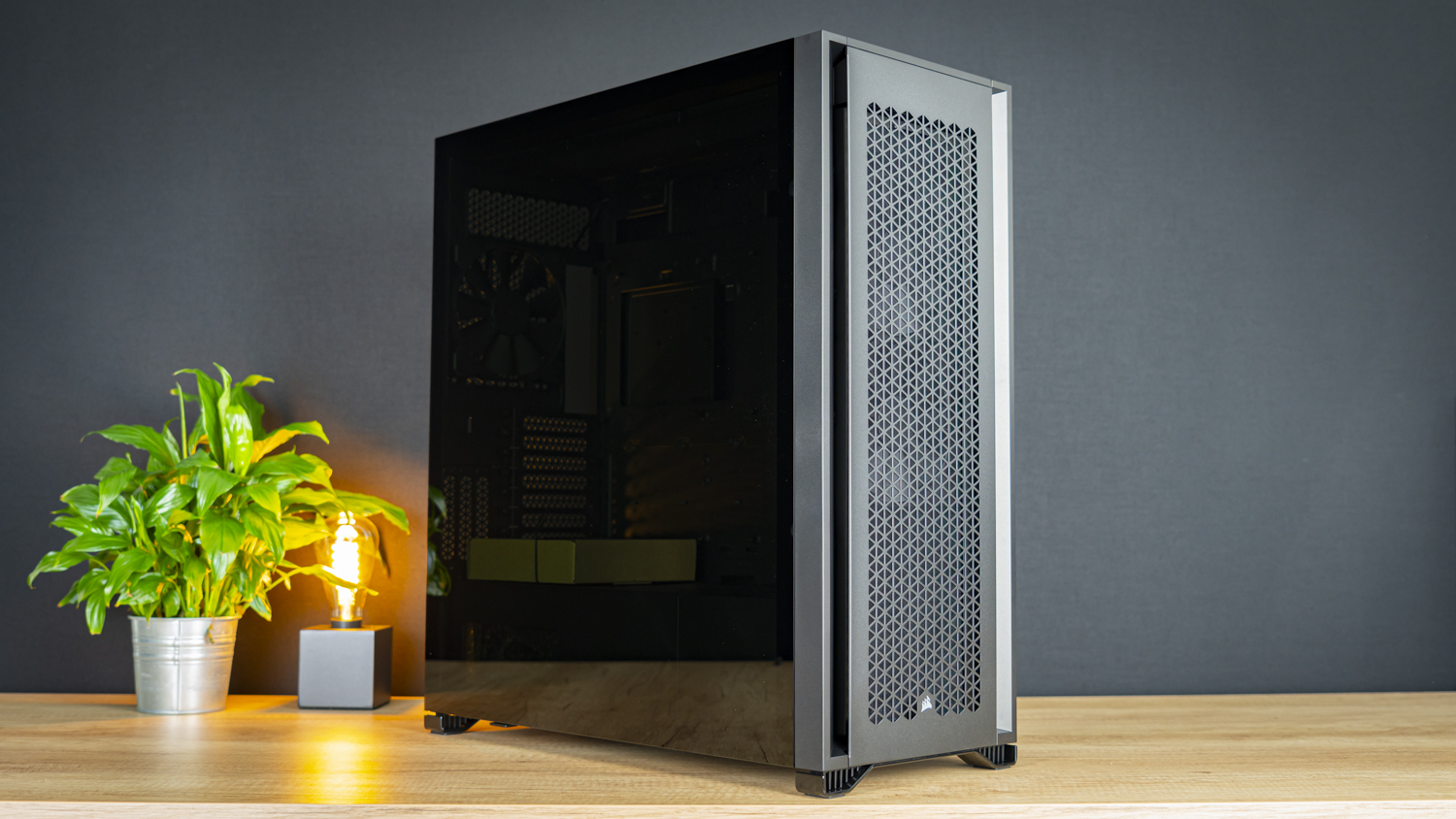
Touring around the outside of the case, you’ll spot three things: the clean, focused design, side intake, and the absolutely enormous dimensions. This is a full-tower case, and I’d forgotten just how big these are – the 7000D measures a whopping 23.6 inches (600mm) tall, and it’s not narrow either at a massive 9.8 inches (248 mm). Of course, that’s kind of what you get when you want a chassis that fits two 480mm radiators and one 420mm unit. Yeah.

Front IO is just as lavish, featuring a massive four USB 3.0 ports, a USB Type-C port, and a headphone & mic combo jack. I prefer to see the latter separate, but this is fine for quick convenience use, because for the best quality you should use the rear jacks on the motherboard anyway.
Keep in mind though, in order to use all four USB 3.0 ports, you’ll have to find a motherboard that has two internal USB 3.0 headers – they do two ports each, and the vast majority of motherboards only come with a single header for two ports, including our Asus Maximus XI Hero board used for case testing.


To access the case’s internals, you simply pull the side panels out of their pins and swivel them open.
Internal Layout
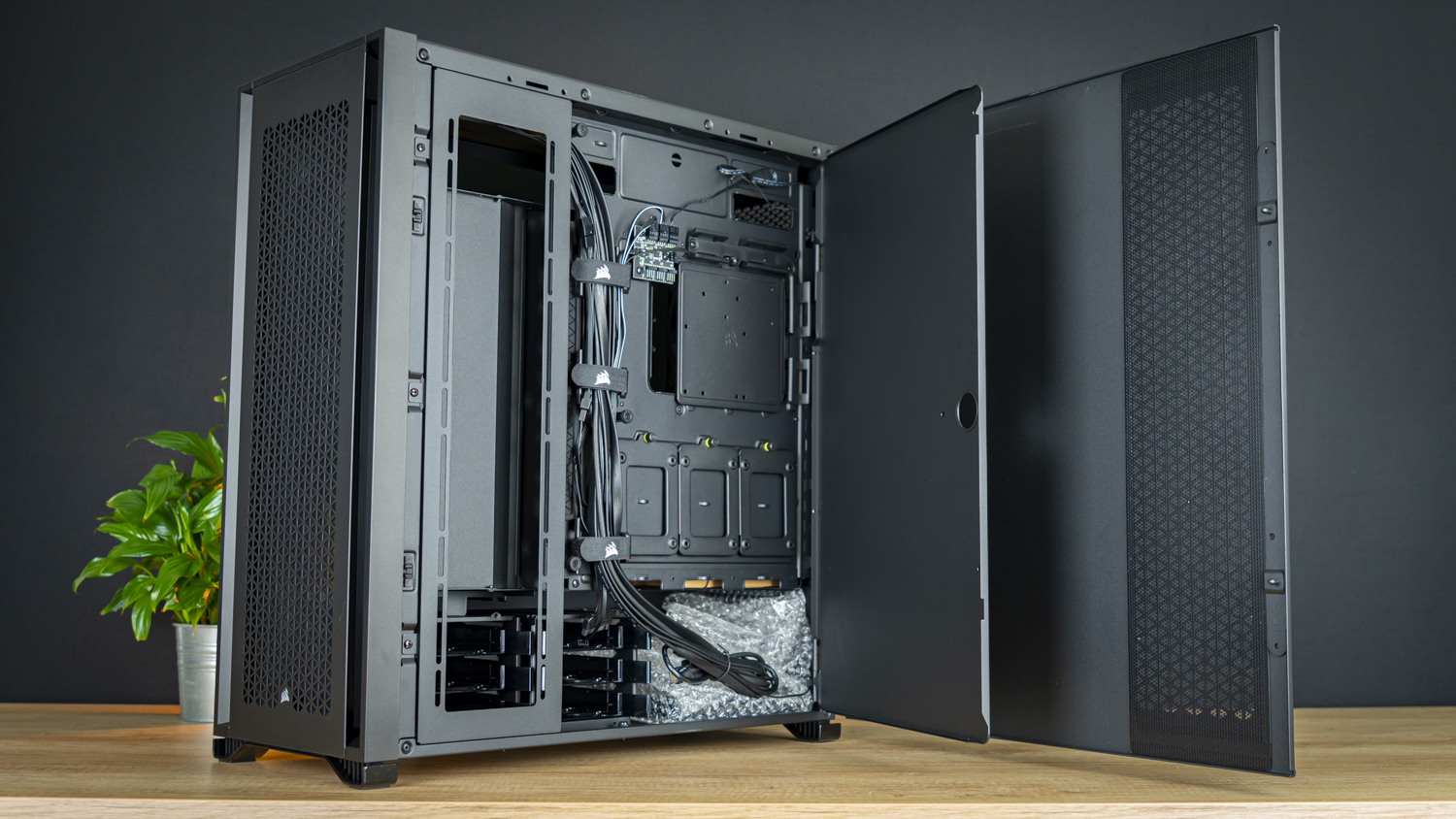
The panels are sat on hinges, and after removing a securing screw at the top of the top hinge, they come right off for easier system assembly.
Get Tom's Hardware's best news and in-depth reviews, straight to your inbox.
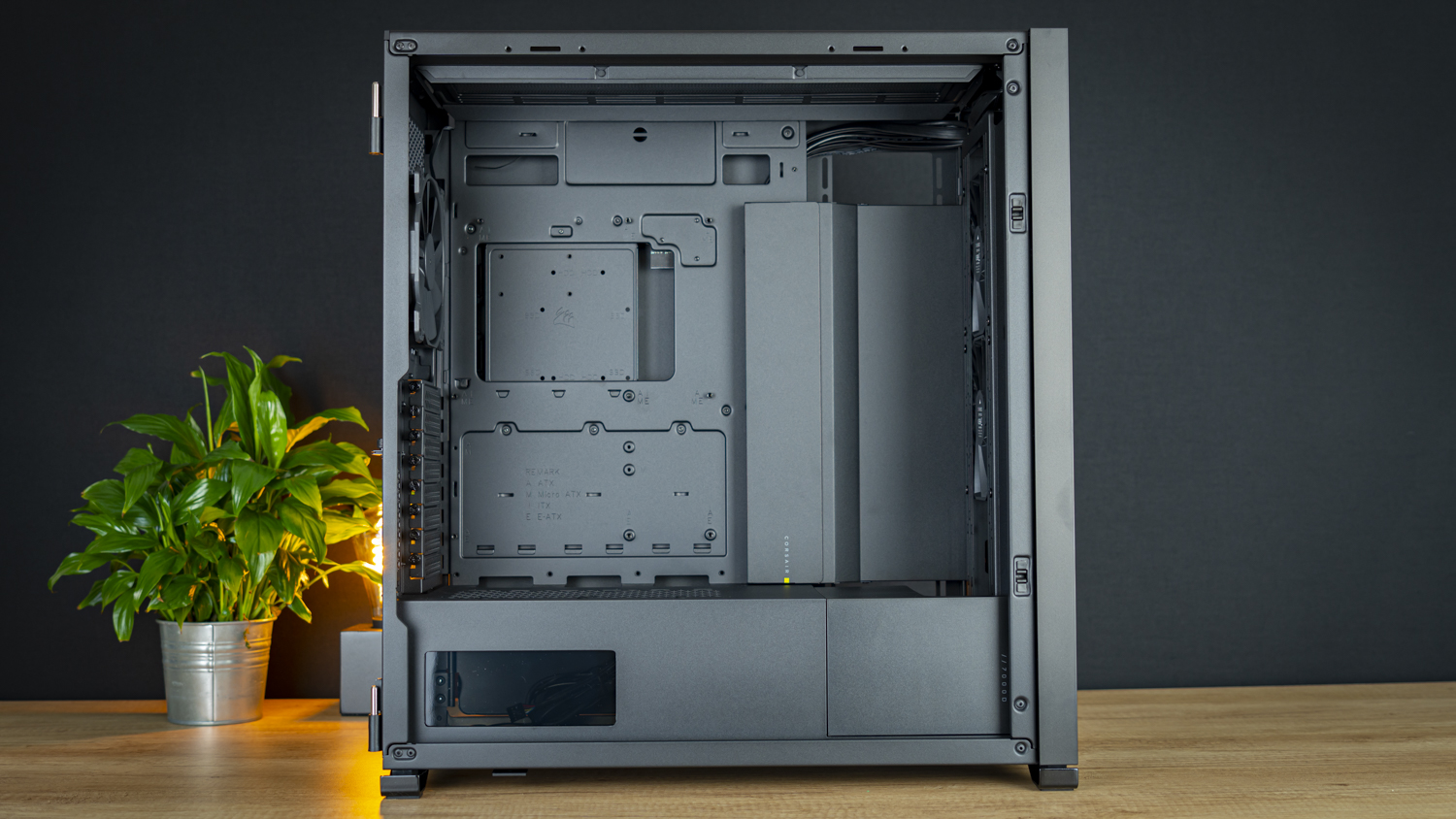
In the main compartment, you’ll spot that there’s a ton of space for a system, with an ATX board occupying only about half the horizontal space. Notice that there are a total of 11 expansion slots, three of which are vertical, and removing the cable cover makes room for larger E-ATX motherboards.
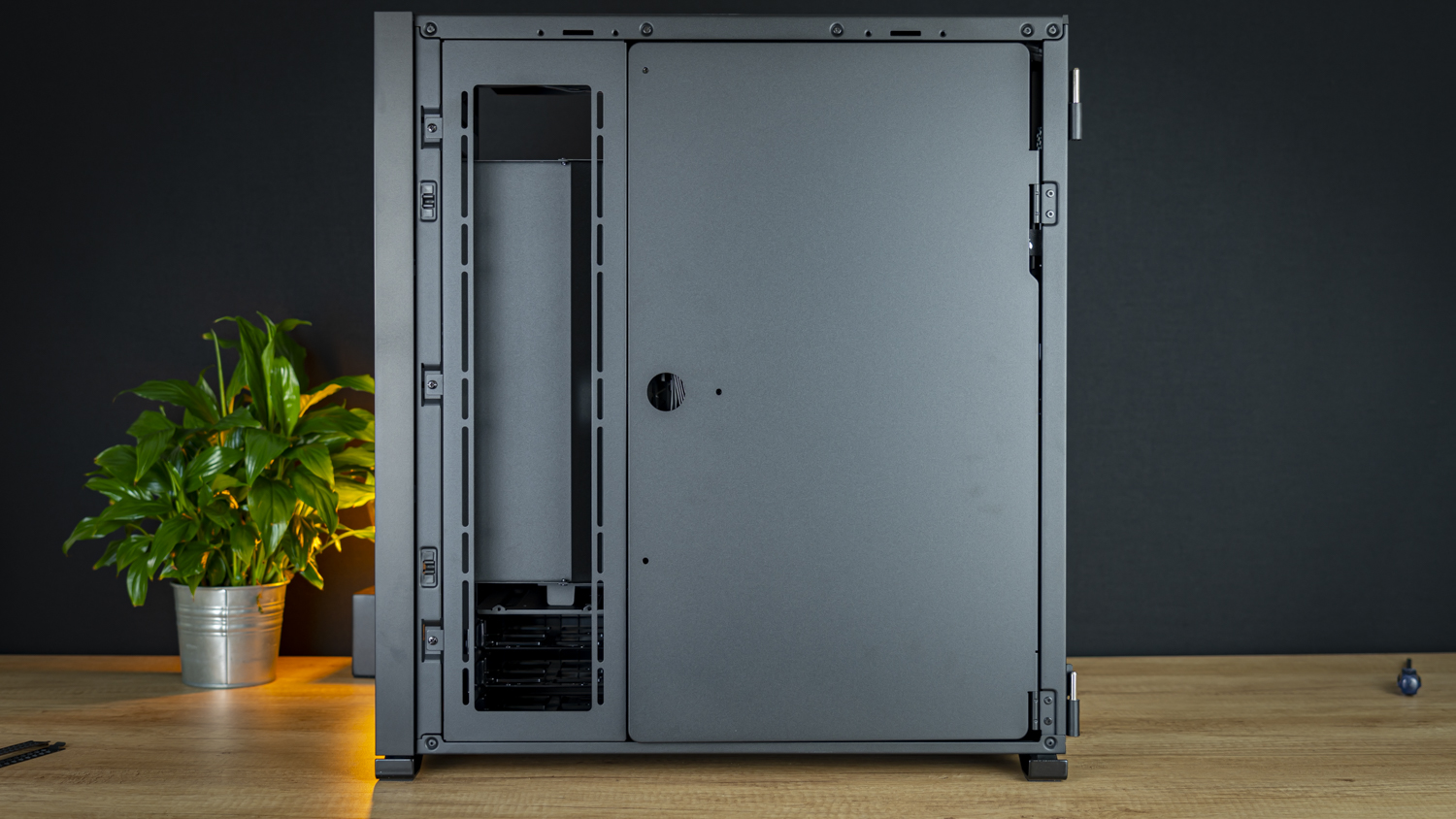
Flip around to the other side of the chassis and you’ll find very little – until you open the second door. Why there’s another internal door when there’s no glass panel to show the cables here I’m not sure about, but it’s there, and it does make shoving the system shut easier.

Behind the door is Corsair’s RapidRoute cable management system, which is a solid setup with tons of Velcro straps (extra are included) and nifty plastic guides to tuck the cables into. There’s also room for three 2.5-inch SSDs and a total of six 3.5-inch HDDs under the PSU shroud.
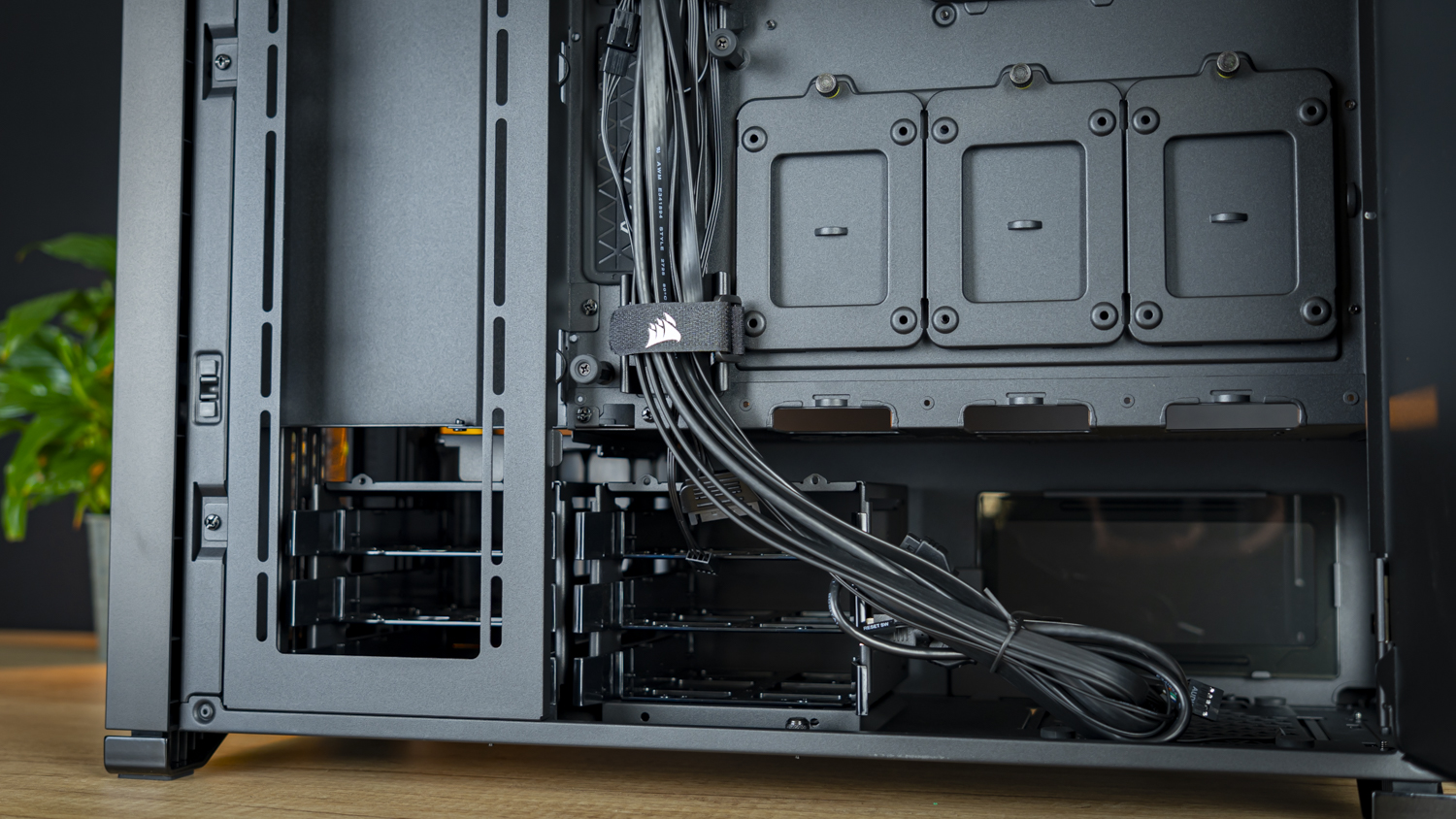
That being said, the HDD sleds have no rubber grommets, only toolless installation mechanisms. That’s fine in a case that has very few hard drive bays, as most builders don’t use them anymore anyway, but the HDD space is a good reason to opt for the Obsidian 7000D. So I feel rubber anti-vibration grommets should be included in over the convenience of a toolless installation mechanism, especially at this price point. Yes, that’s a little more effort during assembly, but it would prevent the rattling, in case the tolerances between drives and the toolless sleds don’t quite line up.
Cooling

For cooling, Corsair doesn’t include a whole lot but what it does, is plenty for basic setups: three 140mm fans. They’re all PWM spinners, wired to a six-fan PWM hub for easy fan control.
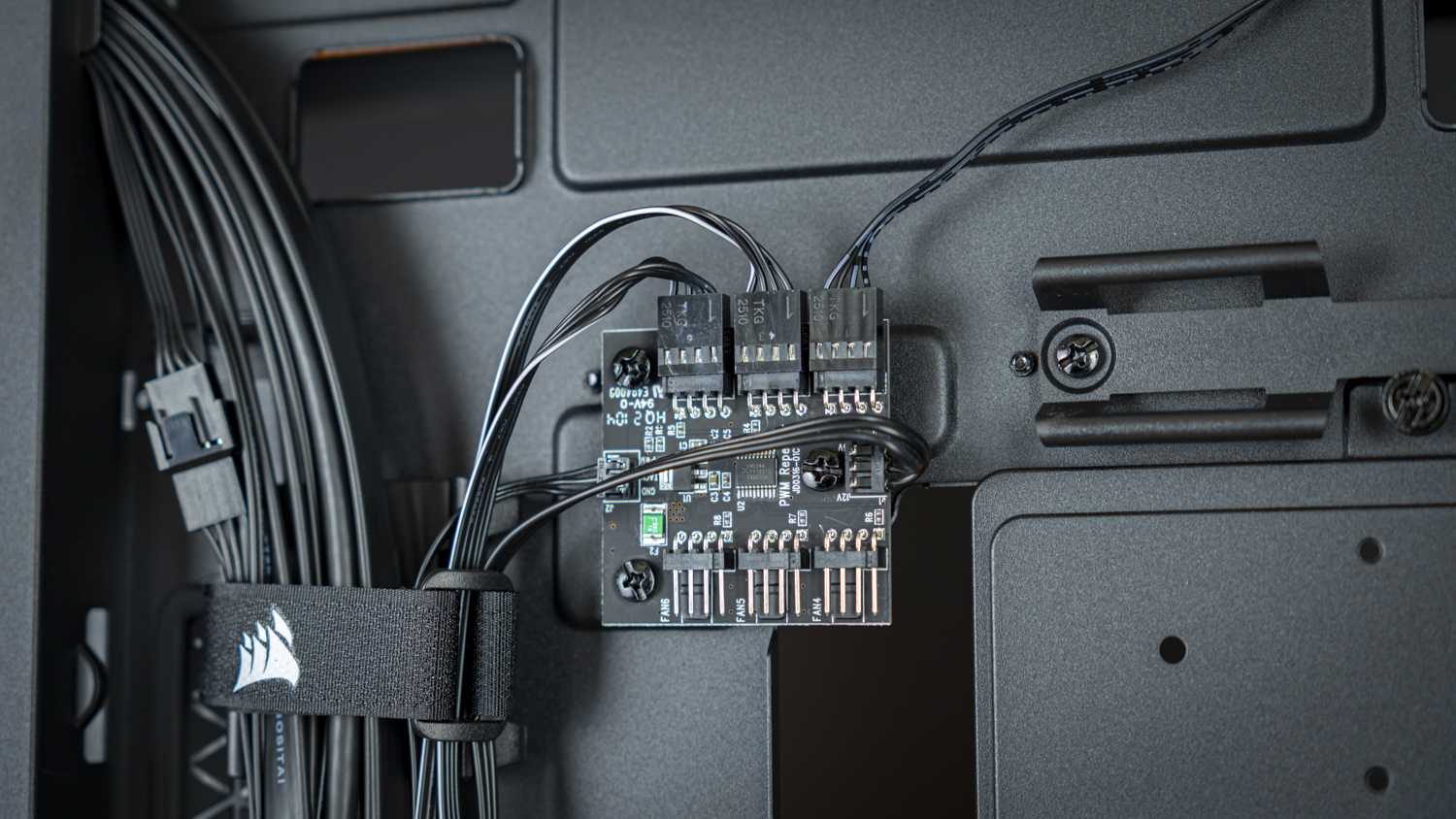
I do appreciate this fan hub, as it wires into a PWM cable to control the fans through your motherboard’s ecosystem – which I generally prefer over Corsair’s own iCue system. The thing I would have liked to see, especially because this case can fit way more than six fans, is either a second hub or a bigger hub, though because the hub is powered by SATA and only uses a motherboard for RPM and PWM signaling, it should be safe to connect more fans with a handful of splitters anyway.
Meanwhile, the front of the chassis and side intake each have fine filters, and the top of the case has a rough filter to prevent dropping particles from falling into the system. The PSU also has a fine filter, and it comes out the side of the case for easy access – a nice touch, especially considering chances are you won’t want to move a big, heavy system like this for regular maintenance.
Included Accessories
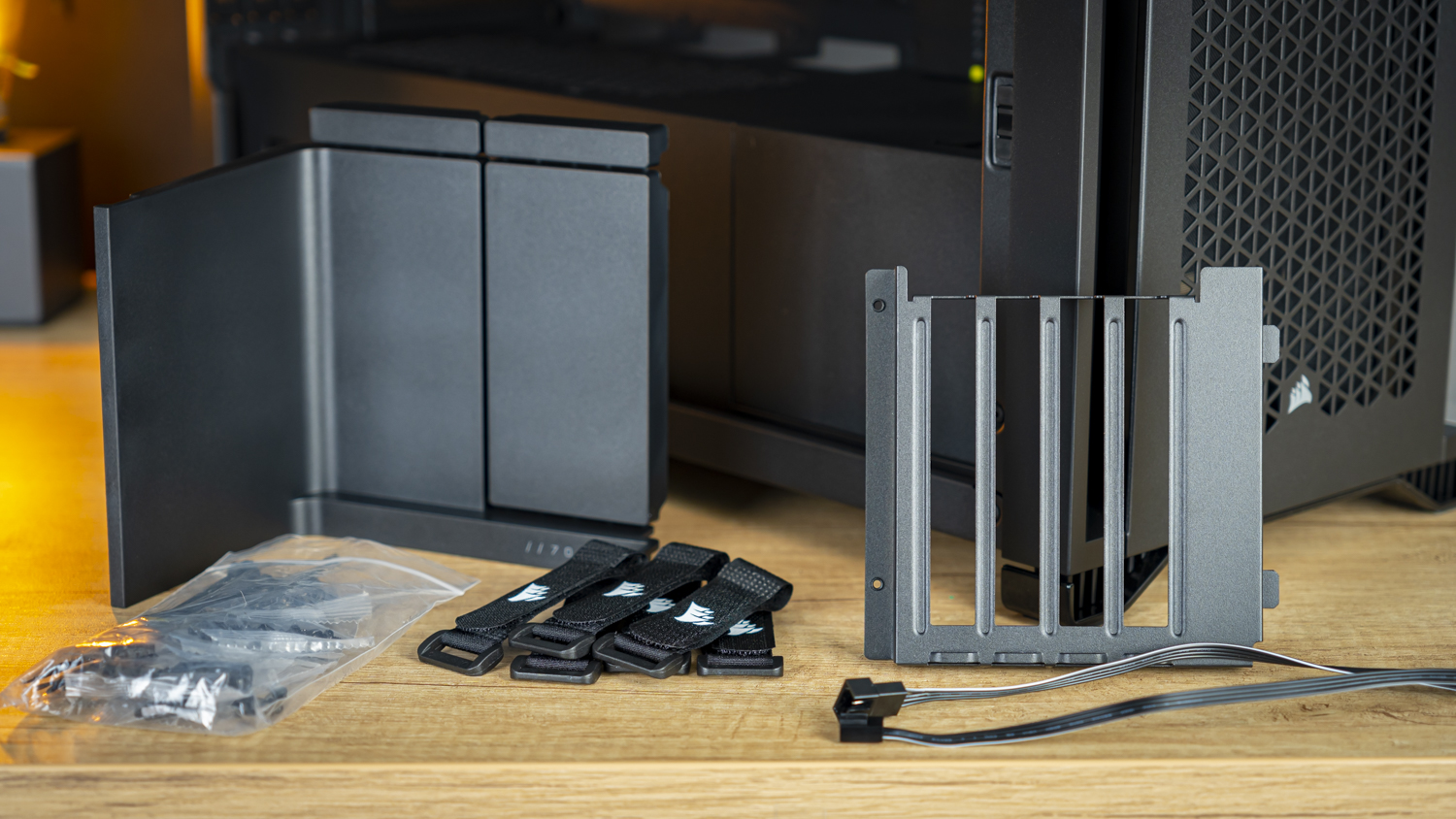
Corsair includes a few, but not a ton of accessories with the 7000D. You’ll find a vertical GPU bracket, though no GPU riser cable, six extra Velcro straps for cable management, a replacement PSU shroud bit that makes space for big radiators (though you’ll have to sacrifice a HDD caddy to use it), and a PWM extension cable in case your fan header is in an inconvenient location, and the baggy with all the fasteners.
Check out our Corsair discount codes to save on our next hardware buy.
Niels Broekhuijsen is a Contributing Writer for Tom's Hardware US. He reviews cases, water cooling and pc builds.
